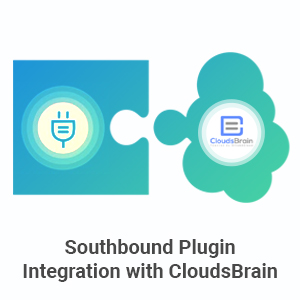


South-Bound plugin i.e. SBP is an important and remarkable integration of SODA Foundation block storage management service to Click2Cloud’s Clouds Brain. It is also called Hotpot project is the part of SODA Foundation that deals with volume management for block storage devices like Ceph, LVM, Dorado, Oceanstor, Netapp E-Series, and many more hosted in user’s infrastructure. Here Netapp E-series storage is an independent contribution by Click2Cloud to OpenSDS.
The entire assembly of the hotpot project consists of API, controller, and Dock that is connected to the Clouds Brain’s backend, and block storage service is accessible via API. This integrated structure is used to manage volume operations such as create, delete, attach, detach, resize, snapshots within storage devices. SBP also takes care of the volume’s data backup by taking a snapshot of the previously saved parameters and performed operations.
Following figure 1. shows the assembly of block storage i.e SODA Foundation Southbound Plugin integration with Clouds Brain:
Fig 1: Clouds Brain – SBP Integrated Backend Structure
If a user wishes to take the support of SBP backend service from block storage then they are supposed to deploy the Clouds Brain in their infra as one cannot expose their data and storage on a public IP. The primary use case of SBP is to perform a volume-related operation on available block storage devices.
The volume operations involve the assembly of API, Controller and Dock collectively called as SBP backend services described below:
API-It is a unified data and storage interface that takes the request from the Clouds Brain or SODA dashboard for volume operations with the required information. All this information is validated by API and sent to the controller for further process.
Controller– It is an opensource implementation for control services. The controller acts as an individual repository to develop core services for the data storage framework. It can identify a suitable device in the infrastructure for the required volume operation request received from API. It then sends the device information and details to the dock to create volume and proceed for further operation.
Dock– It is a docking station to connect heterogeneous storage backends. This is where all the storage backend models are attached via drivers. It executes the volume operation request from the API under suggested volume by the controller through its connected SODA drivers and sends the result back to the Clouds Brain dashboard.
A user can integrate their storage device with Clouds Brain. There are several storage devices in the form of Virtual Storage Appliance or Physical Storage Device that is connected to Clouds Brain are shown below, where NetApp_E-series physical storage is an independent and remarkable contribution of Click2Cloud.
Fig 2. Storage Devices Connected to Clouds Brain
To communicate with different storage devices in the infrastructure, SODA Foundation has developed a code/driver, due to which a user can connect any storage device in their infrastructure to create volumes for applications or VMs.
The capacity of storage devices in block storage is very huge and calculated in petabytes and terabytes. These devices and their added volumes along with their data are stored physically on the host’s VM virtual disk.
OpenSDS Southbound Plugin is a one-stop solution for hassle-free various storage device integration and volume operations in Clouds Brain. SBP project help users to manage volume lifecycle and allow the user to provide volumes for VMs and application deployed on Kubernetes cluster.